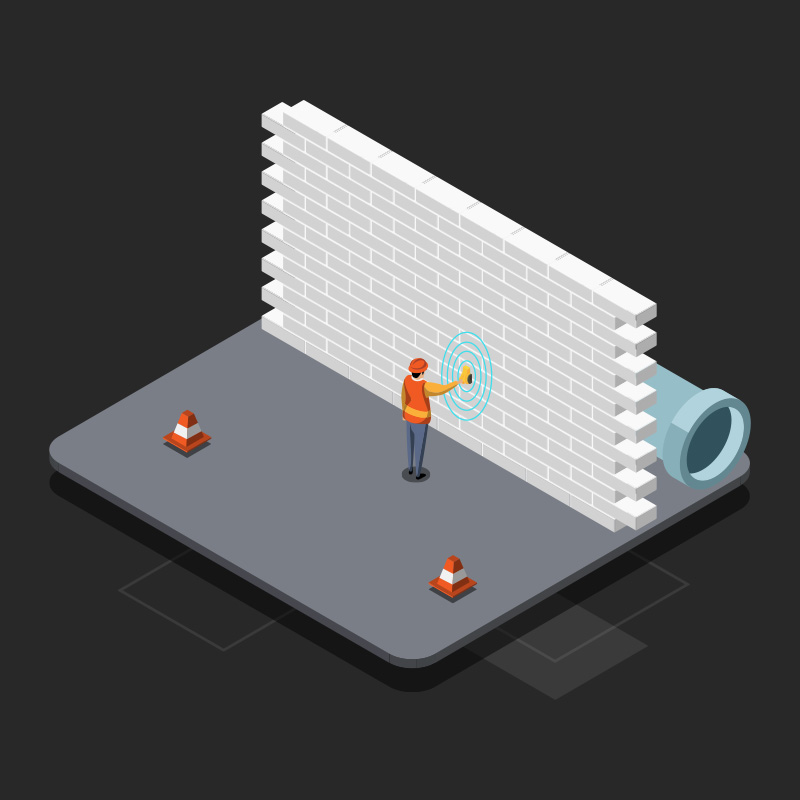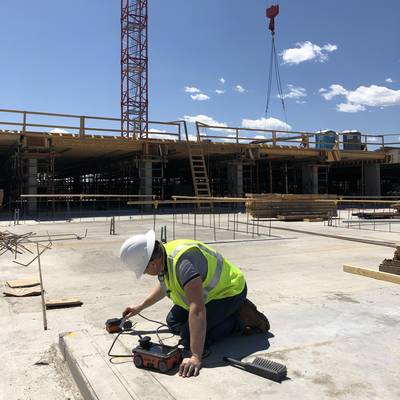Detailed Overview to RainierGPR Concrete Scanning Techniques
Checking Out the Midst: A Comprehensive Overview to Concrete Scanning and Its Diverse Applications
In the realm of building and construction and infrastructure advancement, the careful procedure of concrete scanning holds a pivotal function in making certain the architectural integrity and safety and security of tasks. As technology remains to progress, the applications of concrete scanning have broadened far beyond simple surface-level assessments. From finding rebar and post-tension wires to mapping out gaps and conduits hidden within concrete frameworks, the capacities of contemporary scanning strategies are both remarkable and vital. Nevertheless, the real deepness of concrete scanning's potential reaches also additionally, branching right into unforeseen sectors and triggering innovative remedies. The interconnected internet of possibilities that concrete scanning offers is not only interesting yet also essential for the improvement of different sectors.
Value of Concrete Scanning
Comprehending the relevance of concrete scanning is important in making certain the safety and stability of structures during building and improvement projects. Concrete scanning utilizes innovative modern technologies such as ground-penetrating radar (GPR) and electro-magnetic induction to identify ingrained things, spaces, or other abnormalities within concrete frameworks - RainierGPR Concrete Scanning. By conducting extensive scans before boring, cutting, or coring right into concrete, building and construction groups can avoid accidental damage to crucial architectural components like rebar, channels, or post-tension cables. This positive approach not just avoids costly fixings and job hold-ups however also improves overall construction safety by mitigating the threat of structural failings or collapses because of compromised honesty.
Additionally, concrete scanning plays an essential role in guaranteeing compliance with structure codes and regulations that mandate the defense of existing structural components during construction activities. By accurately mapping out the internal make-up of concrete, scanning modern technologies enable building specialists to make informed choices that maintain the structural security and durability of structures and facilities jobs. In essence, the relevance of concrete scanning hinges on its capacity to safeguard both the structural integrity and the workers entailed in construction endeavors.
Technologies Made Use Of in Concrete Scanning
Concrete scanning counts on advanced modern technologies such as ground-penetrating radar (GPR) and electro-magnetic induction to accurately identify embedded things and abnormalities within concrete frameworks. Ground-penetrating radar operates by sending out high-frequency electromagnetic waves right into the concrete. When these waves run into different materials or gaps within the concrete, they get better to the surface, enabling the GPR system to produce a detailed subsurface photo. This technology is particularly effective in locating rebar, post-tension wires, avenues, and various other items embedded in concrete.
Electro-magnetic induction, on the other hand, works by producing electro-magnetic areas around a concrete structure with a transmitter coil. When metal items exist within the concrete, they interfere with these electromagnetic areas, triggering eddy currents to stream with the steel. By gauging the modifications in the magnetic fields with a receiver coil, the system can identify the location of metallic objects in the concrete.
These innovative technologies play a critical function in non-destructive screening, ensuring the safety and stability of concrete structures in different sectors.
Applications in Building Sector
Within the construction industry, concrete scanning modern technology locates diverse applications that improve job effectiveness and safety and security. One essential application is the discovery of rebar, post-tension cables, and various other ingrained items prior to boring or reducing right into concrete structures. By precisely mapping out these components, building and construction groups can avoid costly problems, make certain structural stability, and prevent prospective safety and security threats. Furthermore, concrete scanning is made use of for situating spaces, such as air pockets or locations of wear and tear within concrete, which can compromise the total stamina of a structure. By identifying these voids beforehand, building experts can take essential measures to address them and keep the longevity of the building. Additionally, concrete scanning plays a vital function in high quality control by validating the thickness of concrete covers over support, ensuring conformity with design specifications and requirements. On the original source the whole, the applications of concrete scanning in the building industry add significantly to enhancing job operations, lowering threats, and providing premium results.

Safety And Security Benefits of Concrete Scanning
In the world of building and construction security, the execution of concrete scanning technology presents a vital benefit in preemptively identifying prospective hazards and fortifying structural stability. By utilizing sophisticated scanning approaches such as ground-penetrating radar (GPR) and electromagnetic induction, building and construction teams can properly find rebar, post-tension cables, avenues, and various other concealed things within concrete frameworks. This aggressive approach significantly minimizes the danger of unintended strikes throughout drilling, cutting, or coring tasks, therefore protecting against costly damages, injuries, and project hold-ups.
Moreover, concrete scanning enhances worker safety by providing real-time details about the structural problem of concrete aspects. By addressing prospective safety worries promptly, concrete scanning contributes to producing a secure functioning environment and alleviating the probability of structural failings or crashes on construction sites.
Future Patterns in Concrete Scanning
Arising developments in scanning innovation are poised to change the area of concrete assessment and evaluation. One significant fad that is getting traction is the integration of expert system (AI) and artificial intelligence formulas into concrete scanning tools. By harnessing the power of AI, these systems can examine substantial amounts of information collected during scanning processes to give more detailed and exact insights right into the condition of concrete frameworks. This can help in discovering covert issues, predicting possible structural failures, and also recommending maintenance strategies.
An additional significant pattern is the development of even more mobile and easy to use scanning devices. Miniaturization of scanning equipment enables for easier accessibility to restricted rooms and remote locations, making assessments extra effective and thorough. Furthermore, advancements in cordless interaction modern technologies enable real-time data transfer and analysis, assisting in quicker decision-making processes.
Furthermore, there is a growing focus on sustainability in concrete scanning technologies - RainierGPR Concrete Scanning. Producers are more tips here increasingly incorporating environmentally friendly materials and energy-efficient attributes into their tools to lower ecological influence. These future fads are readied to enhance the efficiency, accuracy, and sustainability of concrete scanning methods, forming the industry's future landscape
Final Thought
To conclude, concrete scanning plays a vital function in the building and construction market by guaranteeing the security and performance of numerous jobs. By utilizing advanced innovations, such as GPR and radar imaging, experts are able to accurately discover prospective risks within concrete frameworks. The applications of concrete scanning are large and remain to develop, making it a crucial tool for preserving the stability of structures and facilities. As modern technology advancements, the future of concrete scanning holds encouraging growths for boosting construction processes.
